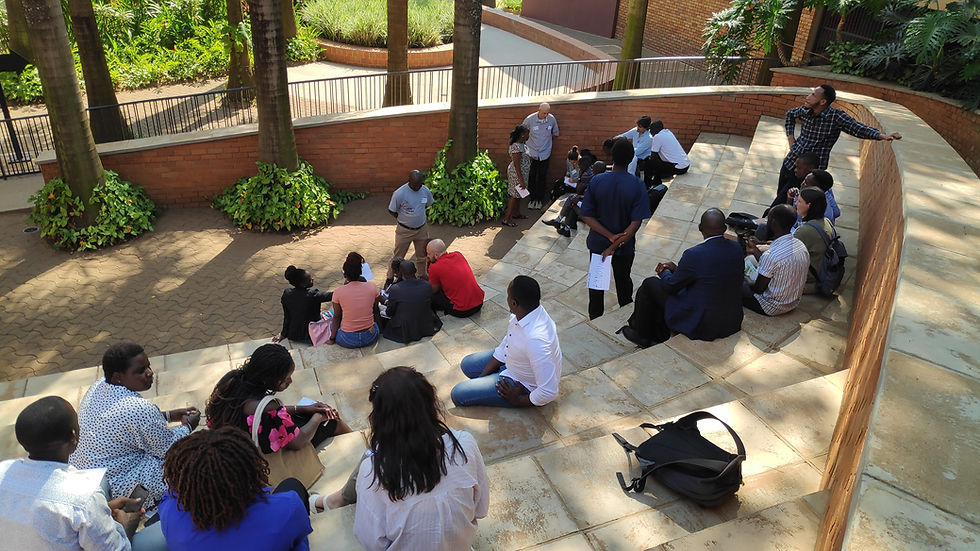Expanding Educational Opportunities
- info8381132
- Mar 24, 2023
- 2 min read
Meg Collin, Field Officer
Since 2005, the Feilden Foundation has been partnering with schools and organisations in East Africa to design and build quality educational facilities with minimal use of resources. Now, we see a need to aid and equip the new generation of architects and designers in the region, and so have begun the research and development of an East African Schools Design Guide. To kick this off Trustee Peter Clegg recently completed a trip to Kampala and Kigali with field officer Meg Collin to visit exemplar schools and meet with project collaborators.

Meg talks to headteacher Joventah on a recent visit to Bunyonyi School. The rotunda, designed and built by the Feilden Foundation (and partners) continues to be the heart of the campus. In presenting our proposal to Uganda’s Ministry of Education and Sport, they gave us the measure of the challenges they face:
Uganda has a population of around 45.8 million, increasing at 3.2% each year, of whom over 45% are under 15.
Every year 2.2 million children enrol in primary, but only 35% of these complete P7, 28% enrol in secondary education* and only 13% make it to GCSE equivalent.
In order to increase secondary enrolment and ensure no child needs to walk more than 10km to school, a programme of building 259 ‘seed’ secondary schools is well underway. It’s funded by the World Bank, but the budget is restricted to $700 000 per school.

Comparing the population pyramids of Uganda, Rwanda and the UK highlights the struggle to build facilities and train teachers fast enough to cater for the expanding population.
As architects, our aspirations are for high-quality learning environments that encourage and inspire pupils to fulfil their potential. We want to promote the use of low-carbon materials and use strategies for climate-responsive design. We seek to design spaces for alternative teaching techniques and extra-curricular activities. Balancing what we think is best with what might be affordable presents a serious technical challenge.

Mustardseed Junior School, by LocalWorks uses rich materiality and landscaping to provide an inspiring learning environment, but realistically it can’t be replicated on a limited budget.
We think there are opportunities to save money: if standard designs are adapted to each site it will reduce the need for large earth movements; the retention of trees can enhance the external environment; ramps can be rationalised to reduce concrete; a phased masterplan can ensure funds are spent more wisely in the long run; and careful choice of materials and good workmanship can reduce lifetime costs of maintenance and repair. But there isn’t much leeway. How do you calculate the economic cost of lost learning time in noisy and overheating classrooms?

In constructing this ‘seed’ secondary school, several large trees were cut down, which would have provided beneficial shading and landscaping.
We’re not the first to come across these challenges and it was inspiring to learn about how architects and educators are already coming up with economical solutions to elevate the standard of educational facilities in the region. We’re excited to be embarking on this project and are optimistic as to where it might lead.

Feilden Foundation Trustee and Ugandan educator Mike explains the expansion plans for St Janan’s School to Peter. Retaining the green space is of first importance.
Resources




Comments